How tight should a cat collar be? This is a question that many pet owners have, and it’s a valid one. A cat collar that is too tight can cause serious health problems for your feline friend, while a collar that is too loose can be dangerous as well. In this comprehensive article, we will answer all of your questions about how tight a cat collar should be and give you some helpful tips to make sure your kitty stays safe and healthy!
Should cats wear collars?
The short answer is yes! It is very important that all cats wear collars, even if they stay indoors. Indoor cats can easily get lost if they escape through an open door or window, and a collar with your contact information will help them find their way back home. Outdoor cats should always wear a collar with ID tags in case they get lost or are involved in an accident. [3]
Do cats like collars?
This is a difficult question to answer since every cat is different. Some cats don’t mind them at all while others really dislike having a collar on. If you have a kitten, it’s best to get them used to wearing a collar early on so they don’t put up a fuss when they’re older.
One thing to keep in mind is that even if your cat doesn’t like their collar, it’s important to make sure they always wear one. This is because cats are very good at escaping from yards and houses, and their collars will help ensure they can be returned home safely if they ever get lost. [3]
Does my cat need a collar?
Use for identification
Every cat needs a collar for identification, even if they never go outdoors. If your cat where to get lost, a good Samaritan is much more likely to bring them home if they have ID on their collar. At the very least, your cat’s collar should have their name and your phone number on it.
Some people choose to also put their address on their cat’s ID tag, but be aware that this could lead to strangers showing up at your door looking for a lost pet. If you’re not comfortable with that possibility, just put your phone number on the tag. You can always give the finder your address once you’ve had a chance to speak with them and make sure they’re legitimate. [4]
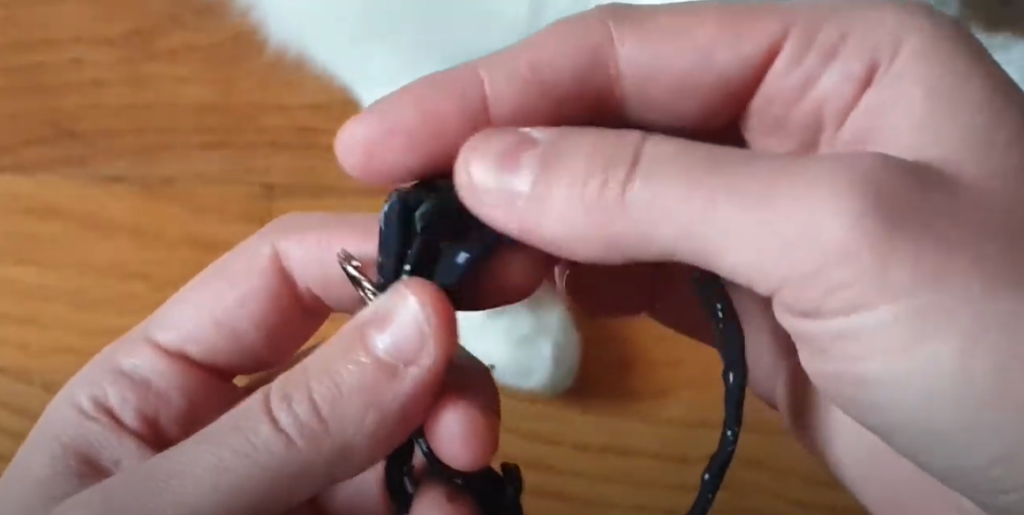
Activate cat flaps and feeders
If you have an indoor cat, you’ll need to provide them with a litter box, food, and water. You should also have a scratching post for them to scratch on. Outdoor cats will need access to food, water, and shelter. Cats like to be up high, so consider putting their food and water dishes on a shelf or counter.
You’ll also need to provide your cat with a litter box. It’s important to keep the litter box clean; otherwise, your cat may start going to the bathroom outside of the box. Scoop the litter box daily and change the litter every week or so. [4]
Control fleas
Wearing a collar can also help protect your cat from fleas and ticks. If your cat spends time outdoors, these pests can hitch a ride on their fur and end up in your home. By keeping your cat’s collar snug, you can prevent fleas and ticks from getting comfortable and setting up shop. [4]
Decrease hunting
A too-tight collar can decrease a cat’s hunting success. A study of free-ranging domestic cats in New Zealand found that those with tighter collars (defined as less than two finger widths of slack when pulled gently) were less likely to bring home prey. [4]
What type of collar should you choose?
There are a few different types of cat collars on the market, and the type you choose will likely depend on your cat’s personality and activity level. If you have an adventurous cat who loves to explore, a breakaway collar may be the best option. These collars are designed to release if your cat gets caught on something, which can help prevent injury. If you have a more laid-back kitty, a standard collar may be sufficient.
No matter what type of collar you choose, it’s important to make sure it fits properly. A loose collar can easily come off, while a too-tight collar can cause discomfort or even choke your cat. [4]
How to Measure Your Cat’s Neck
There are a few things you’ll need in order to measure your cat’s neck for a collar:
- a measuring tape
- a friend (to help hold your cat still)
- treats (to bribe your cat with)
First, put the measuring tape around your cat’s neck where you want the collar to sit. It should be snug, but not too tight—you should be able to fit two fingers between the tape and your cat’s fur. Next, have your friend hold on to your cat while you quickly jot down the measurement. For safety reasons, it’s best to take off the collar and measure again just to be sure. [1]
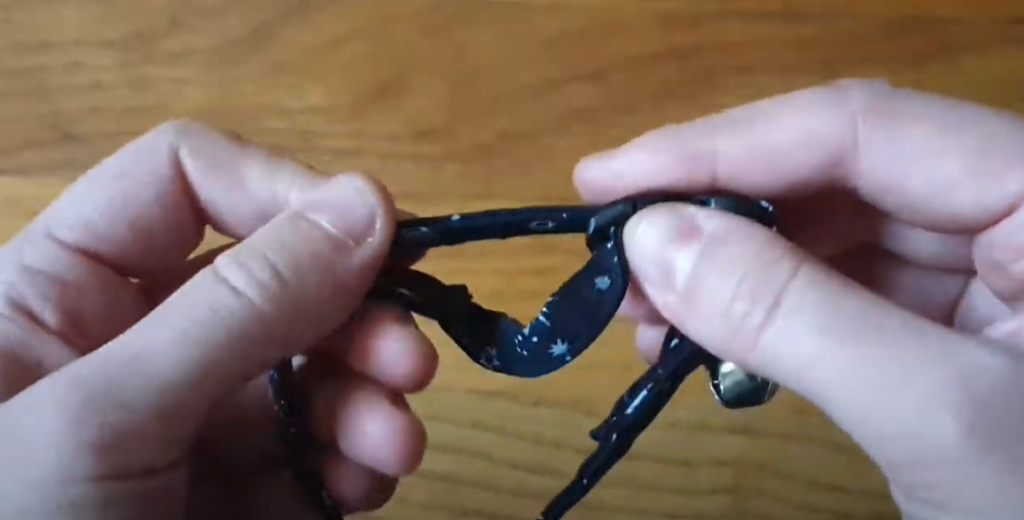
How to Fit a Cat Collar
Most pet stores will have staff who can help you fit your cat’s collar properly. If you’re buying a collar online, make sure to measure your cat’s neck and consult the size chart before purchasing.
When fitting a collar, you should be able to slip two fingers underneath it comfortably. The collar should not be so loose that it can easily slip off, but it shouldn’t be so tight that it’s uncomfortable for your cat to wear.
If you’re unsure whether the collar is too tight or too loose, err on the side of caution and go for a slightly looser fit. You can always tighten the collar if needed, but if it’s too tight, you’ll need to buy a new one. [1]
How to tighten a cat collar?
You don’t want the collar to be so tight that it’s uncomfortable for your cat, but you also don’t want it to be so loose that they can slip out of it. The general rule of thumb is to leave enough room to fit two fingers between the collar and your cat’s neck.
Once you’ve tightened the collar, put it on your cat and see how they react. If they seem uncomfortable or if they try to slip out of it, you’ll need to adjust the fit.
Keep in mind that collars can stretch over time, so you may need to tighten them occasionally. If you have any questions about how tight a cat collar should be, please consult your veterinarian. They will be able to give you specific advice based on your cat’s individual needs. [2]
How to tell if a cat collar is too small?
If the cat collar is too small, it will be tight on the cat’s neck and may cause discomfort. The cat may also have difficulty breathing. If you suspect the collar is too tight, remove it immediately and seek professional help. [2]
How tight should a flea collar be on a cat?
A good rule of thumb is to make sure you can fit two fingers underneath the collar. This will ensure that it’s tight enough to stay put, but not so tight that it’s uncomfortable for your cat.
If you’re unsure whether the collar is too tight or not, try this simple test: put the collar on your cat and then gently tug on it. If the skin on their neck moves with the collar, then it’s too loose and needs to be tightened. On the other hand, if their skin bunches up under the pressure of your fingers, then it’s too tight and needs to be loosened.
As a general rule of thumb, a flea collar should be replaced every three to four months. This will ensure that it remains effective at keeping fleas and other pests off of your cat. [2]
Are collars uncomfortable for cats?
The short answer is no, collars are not generally uncomfortable for cats. In fact, most cats tolerate them quite well and they can even get used to wearing them over time. However, it’s important to make sure that the collar is not too tight as this could cause discomfort or even choking. If you’re unsure about how tight to make the collar, err on the side of caution and leave a bit of slack. You can always tighten it later if needed.
Another thing to keep in mind is that some cats have sensitive skin and may be allergic to certain materials. If you notice your cat scratching at their collar or seem otherwise bothered by it, try switching to a different type of collar or material. [2]
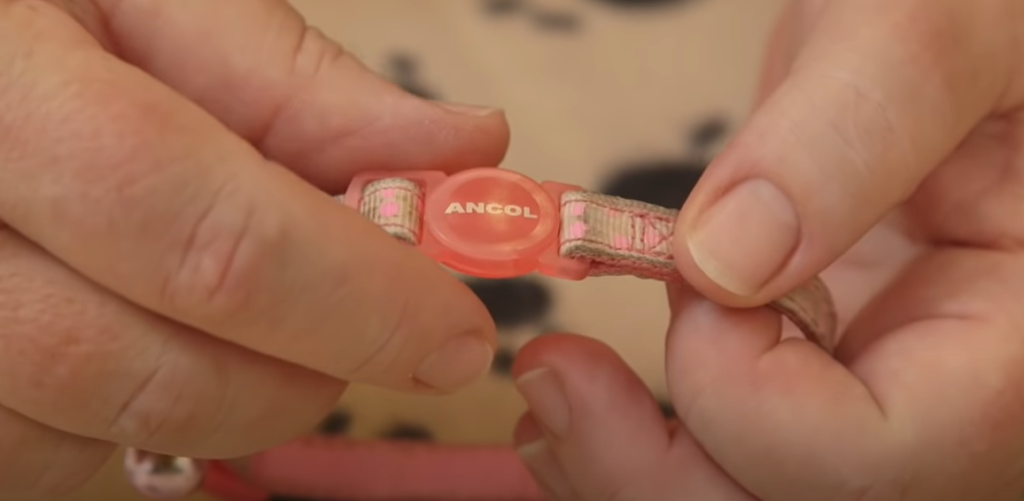
Should I take my cat’s collar off at night?
Most experts agree that it is best to remove your cat’s collar at night. This will give them a chance to move around and stretch without the risk of getting caught on something or choking.
If you do choose to leave your cat’s collar on at night, make sure it is loose enough that they can comfortably move their head and neck. You should also check it regularly to make sure it hasn’t become too tight. [2]
FAQ
Is it cruel to have a bell on a cat collar?
The general consensus is that bells on cat collars are not cruel. In fact, many people believe that they help keep cats safe by alerting predators to their presence. However, some people do feel that the constant jingling of a bell can be irritating and stressful for a cat. If you’re concerned about your cat’s welfare, you can always remove the bell from its collar.
Do collars annoy cats?
Cats are very independent creatures and usually don’t like anything constricting their movement. That’s why many people wonder whether collars annoy cats. The answer is that it depends on the cat. Some cats will tolerate a collar just fine, while others will find it uncomfortable and try to remove it. If your cat seems unhappy with its collar, you may want to try a different type or size.
When should you put a collar on a cat?
You should put a collar on your cat if she goes outdoors, even if it’s just in the backyard. An indoor-only cat may not need a collar unless she’s prone to darting out the door when it’s opened.
Cats are curious creatures by nature and love to explore. If your kitty likes to roam, it’s important that she wears a collar with an ID tag so that she can be returned home safely if she gets lost. A microchip is also a good idea in case her collar comes off.
Why is my cat acting weird after putting on a collar?’
If your cat is acting weird after putting on a collar, it may be because the collar is too tight. Cats are very sensitive to pressure and even the slightest bit of pressure can cause discomfort. If the collar is too tight, it will constrict your cat’s movement and may even choke them. To avoid this, make sure to check the fit of the collar before putting it on your cat. A good rule of thumb is to be able to fit two fingers between the collar and your cat’s neck.
How do you put a collar on a skittish cat?
If you have a skittish cat, the process of putting a collar on them can be daunting. Here are a few tips to make it easier:
- Try using a harness instead of a collar. This will give your cat more support and make them feel more secure.
- Make sure the area you’re putting the collar on is clear of any clutter or objects that could startle your cat.
- Give your cat plenty of time to get used to the sensation of wearing a collar before tightening it. Put it on loosely at first and gradually tighten it over time as your cat gets more comfortable.
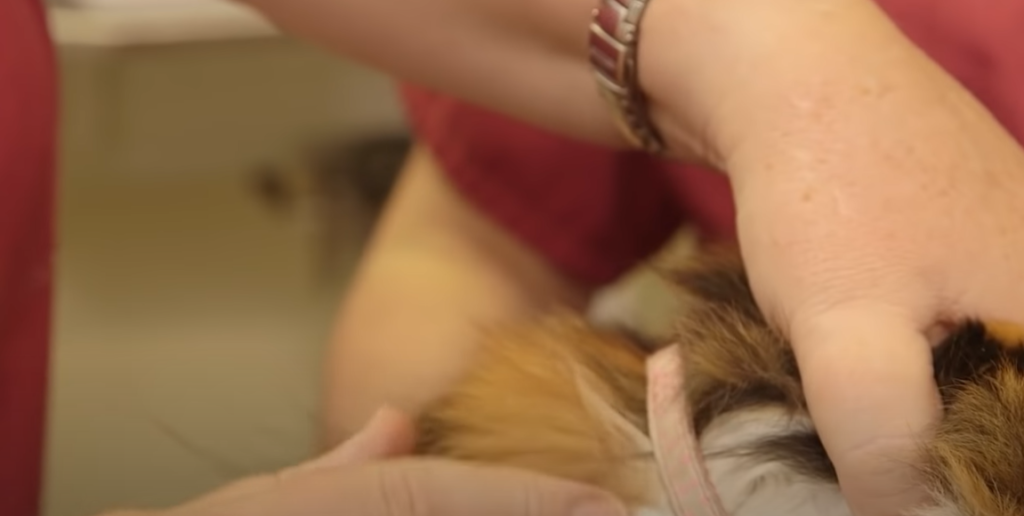
What happens if a cat licks an advantage?
If a cat licks an advantage, it will most likely cause the product to become less effective. The cat’s saliva can break down the active ingredients in some products, rendering them useless. In addition, licking can also spread the product beyond the intended area of application, which can be dangerous. If your cat licks an advantage spot-on product, call your vet right away.
Why does my cat hiss at her collar?
If your cat is suddenly hissing and growling every time she sees her collar, there’s a chance it’s too tight. A collar that’s too tight can cause discomfort and even pain, which can lead to aggressive behaviors like hissing. If you’re not sure whether your cat’s collar is too tight, try loosening it a bit and see if her behavior improves.
Another reason your cat may be hissing at her collar is because she doesn’t like the way it looks or feels. Some cats simply don’t like having anything around their necks, so if your cat falls into this category, it might be best to ditch the collar altogether. Instead, consider using a harness, which can provide the same level of safety without being as intrusive.
Useful Video: How to Adjust Your Cat Collar from Kira’s Pet Shop
Conclusion
In conclusion, there is no one-size-fits-all answer to the question of how tight a cat collar should be. It depends on your individual cat’s needs and preferences. However, as a general rule of thumb, it’s always best to err on the side of caution and go for a loose fit. This will help ensure your cat stays comfortable and safe, without feeling constricted. Thanks for reading! We hope this article was helpful.
References:
- https://www.nogginsandbinkles.com/blogs/tails/how-tight-should-a-cat-collar-be
- https://supakit.co/blogs/cat-guides/how-tight-should-a-cat-collar-be
- https://www.litter-robot.com/blog/breakaway-cat-collars/
- https://excitedcats.com/how-tight-should-a-cat-collar-be/




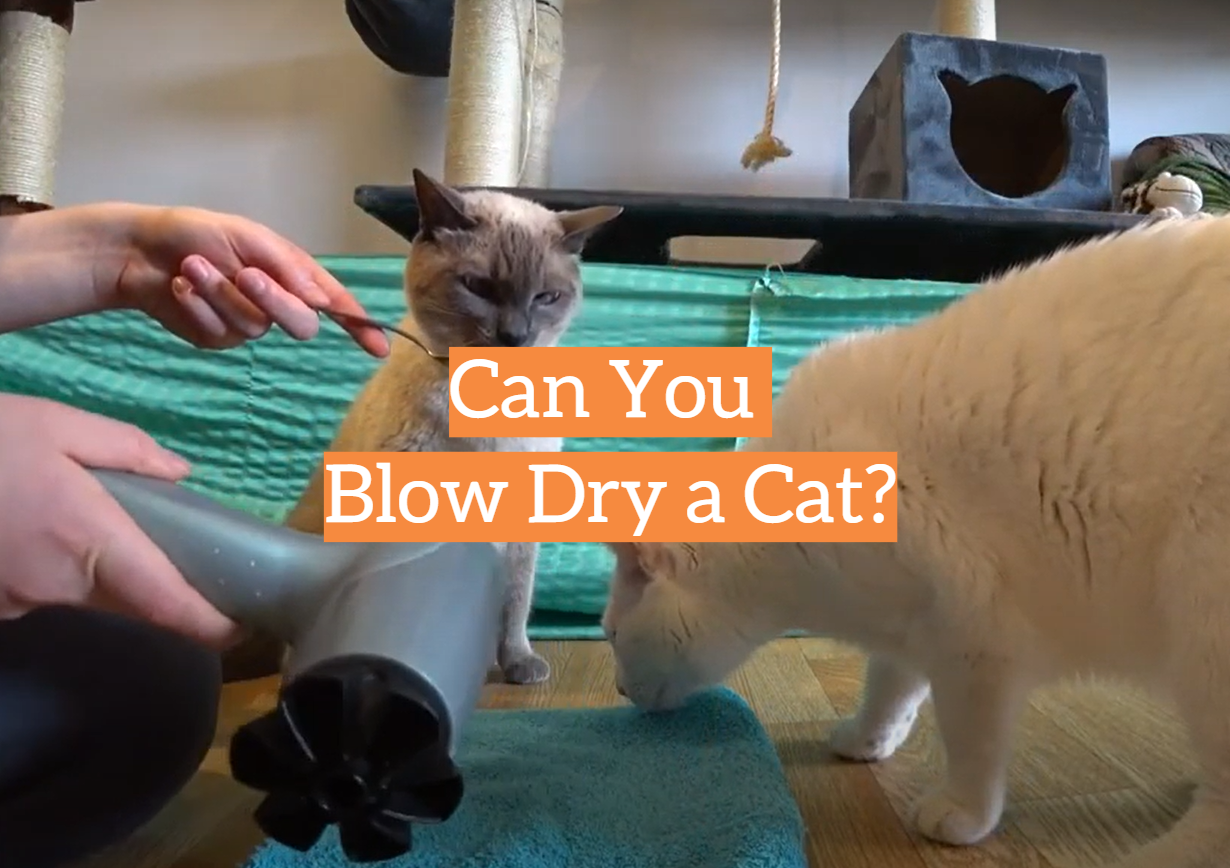
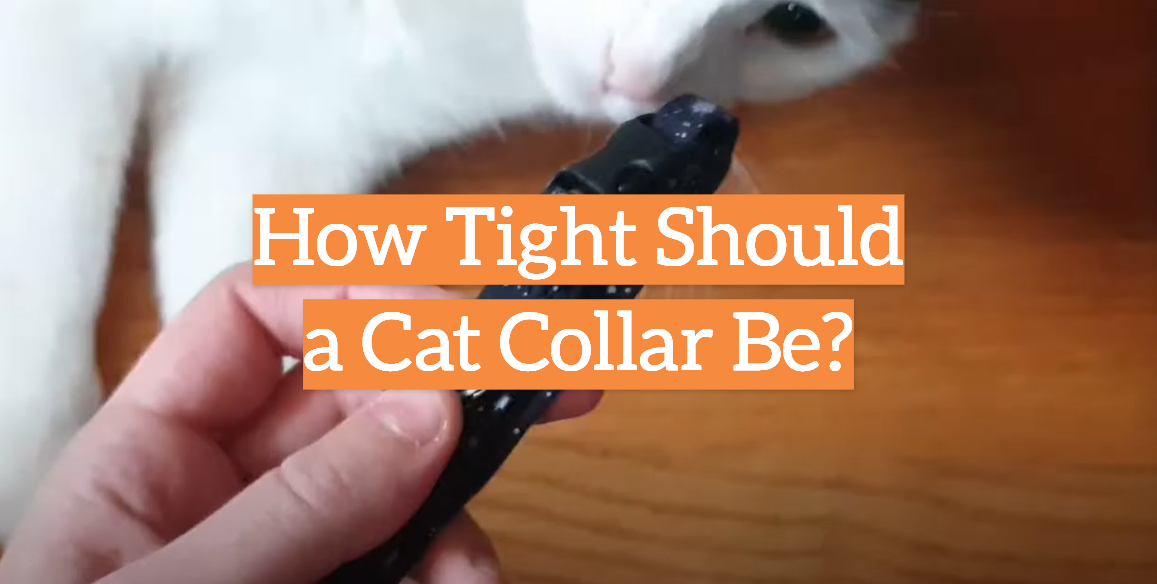
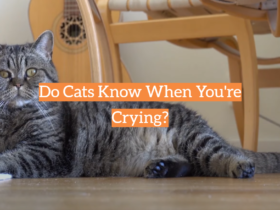



Leave a Reply